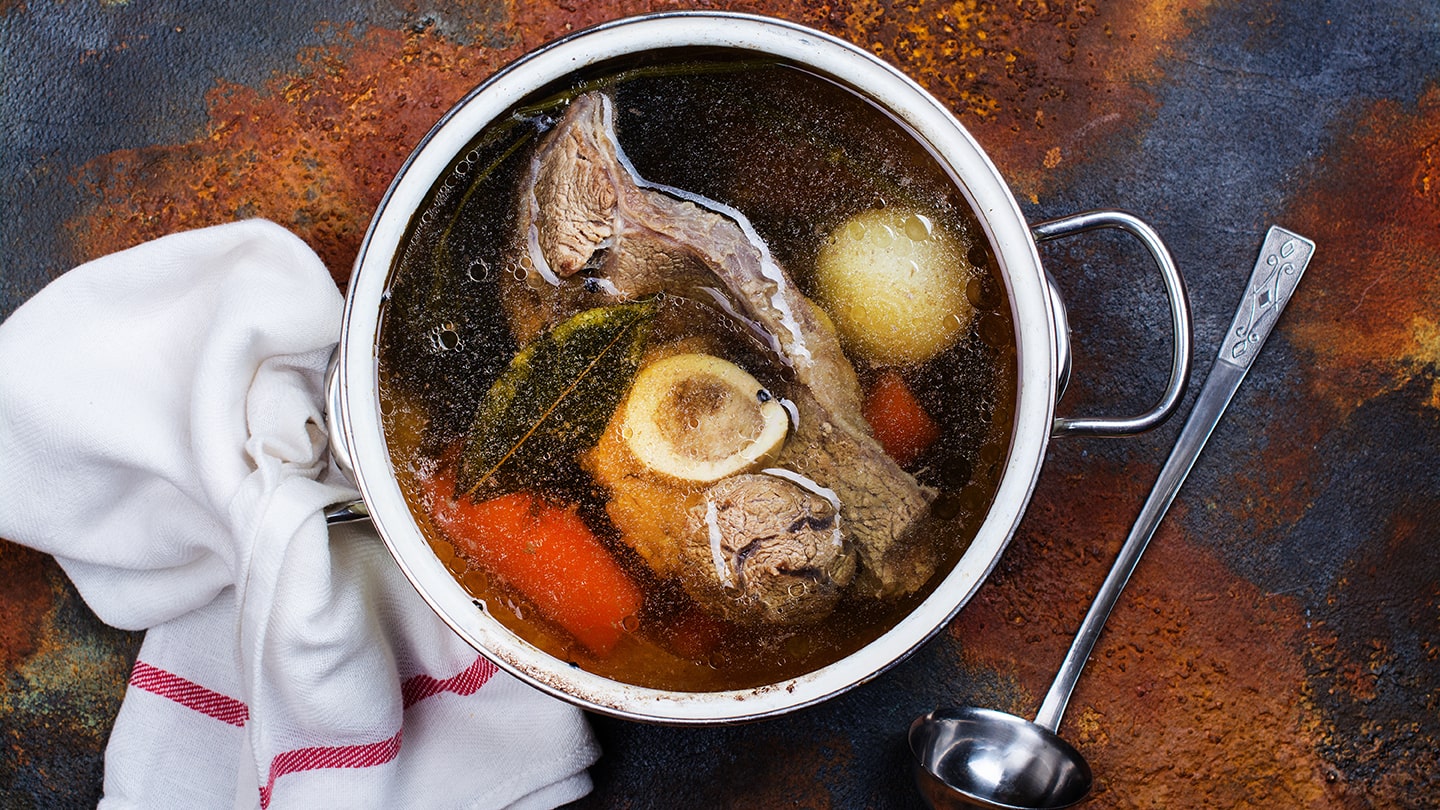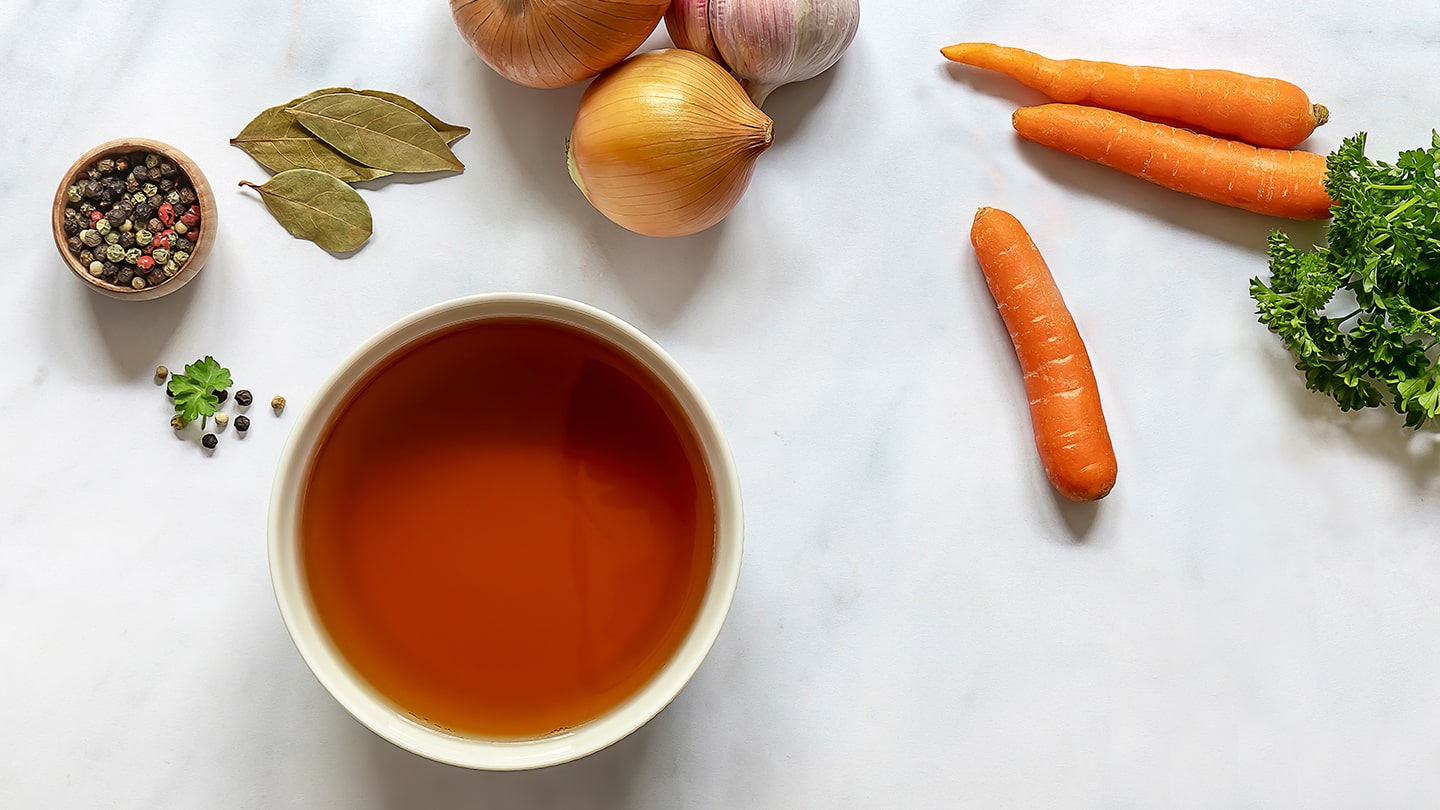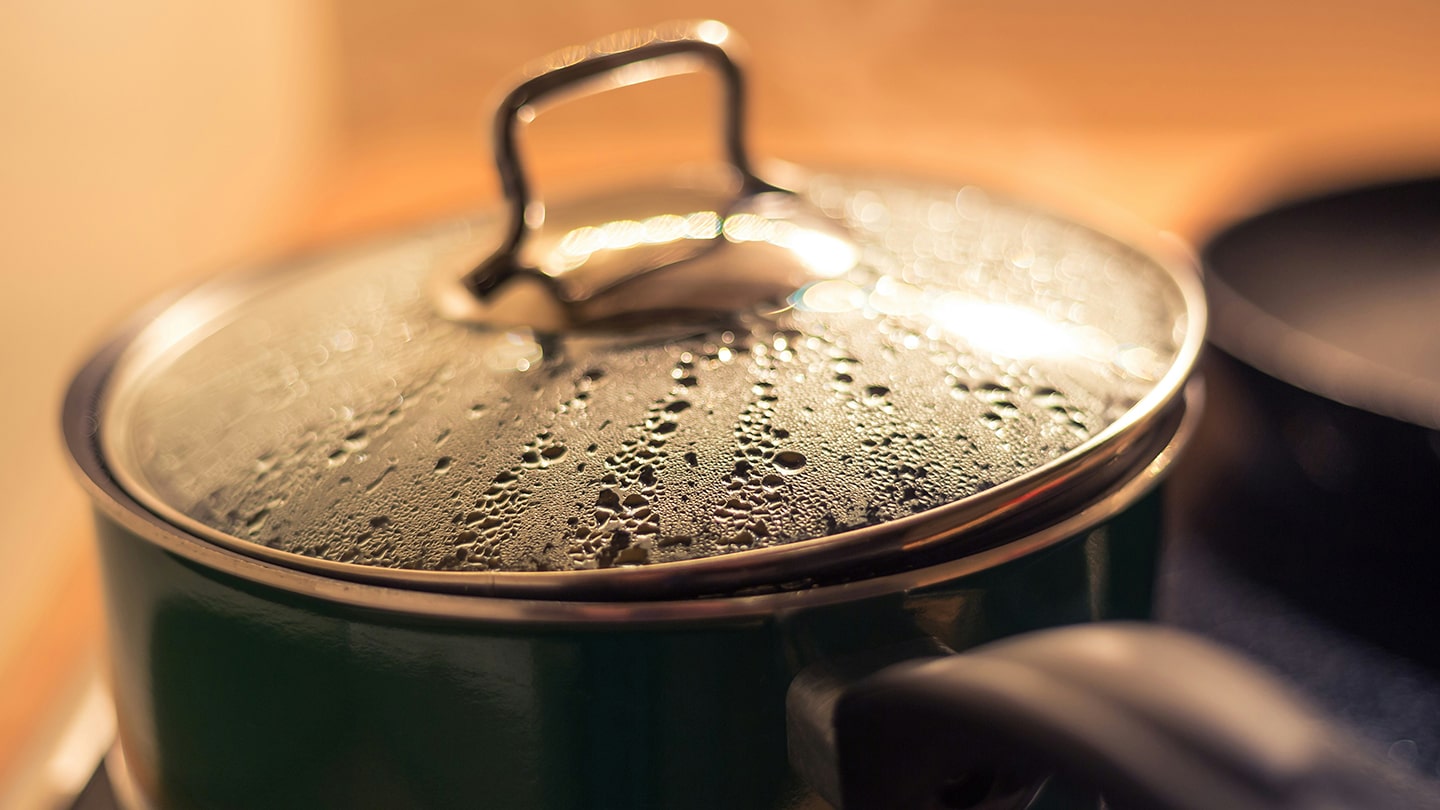...you may have noticed a common ingredient in our recipes is stock. At a very basic level, stock is a savory, flavorful cooking liquid used as a base ingredient for soups, stews, braises, and sauces, and is derived from meat, poultry, fish, game, or vegetables with aromatics and herbs. Stock is an ancient, beloved ingredient used by home cooks and professional chefs to build body, increase volume, and create umami in recipes. Using the right stock at the right time—whether store-bought or homemade—can make all the difference in a dish.
However, what exactly is stock? Is it the same as broth? What are the benefits? Where does it come from? And, most importantly, why should we use it? The following post will bring you deeper into what we consider “liquid gold.” Much more than simmering kitchen scraps, stock is a lesson in history, geography, science, nutrition, and more.

Photo Courtesy of: Adobe Stock
The Story of Stock
Like most dishes, the story of where stock originates is highly debatable as all cultures can easily claim some form of this long-simmered, flavorful liquid as their own. In Italy, it’s brodo. In France, it’s bouillon. In Vietnam, it’s canh. In Mexico, it’s caldo. It is, however, widely accepted that stock was more than likely invented along with the discovery of fire and was used as a way for humans to squeeze every last calorie from an animal (in turn, making bone broth a crucial part of today’s popular Paleo Diet). But the French can be credited for taking hold of stock; formalizing it, refining it, defining it, and applying it to cooking methods, making it the base of flavor development for a wide variety of dishes. Today, we appreciate the standardization of stock and the window of creative liberty it has opened.
Nutritional Benefits
There are countless nutritional benefits of stock and bone broth which is why it is often referred to as “liquid gold.” The bones and connective tissue of all animals are made up of nutrients such as collagen. Collagen, the most abundant protein in our body, is the building block for our skin, muscles, bones, tendons, and ligaments. Consuming collagen-rich foods, such as stock and bone broth, helps our body repair and grow. Additionally, stock is packed with amino acids and minerals that aid with digestion and help reduce inflammation within our bodies, among other healthful benefits.

Photo Courtesy of: Adobe Stock
Concentration & Water Management
I consider making a stock, a broth, a sauce, or anything to do with water, a dance. It’s a play in increasing and decreasing the volume of liquid to decrease and increase the flavor concentration. Simply put, when you start a stock it is typically a mess of ingredients covered in cool water. When you place the pot on the stove, you bring the water to a boil, but then, after only several minutes of violent rumbling, you reduce your flame and continue to cook the contents on simmer. The gentle heat sweetly coaxes the flavor and nutrients from your ingredients, and your water begins to flavor. And then, something else happens, water evaporates, and the flavors condense. But there is more to be had! Dance with the levels of the water: start up, it will come down, bring it back, it will come back down, and so on. Each time you dance, the stock becomes richer. Here is where science and art begin to collide.

Photo Courtesy of: Uwe Conrad, @uconrad on Unsplash
Types of Stock & their uses
When you go into a grocery store—or if you are interested in preparing your own—there can be an overwhelming selection of stocks to choose from. Keep it simple: vegetarian or not, light or dark. Stock is derived from slowly simmering aromatics and herbs along with the bones of meat, poultry, fish, game, or it can be completely vegetarian. The type of stock you use is determined by the recipe you are following and/or the outcome you are looking to achieve. A light (or white) stock, such as chicken or vegetable, is best for lighter dishes such as soups, rice or risotto, and some sauces. A dark (or brown) stock, such as beef, is best used for heavier stews, braises, and some sauces.

Photo Courtesy of: Prairie Street
About Veal Stock
A note from Chef Kendra: If you are not yet familiar with veal stock, allow us to introduce you to it. While we regularly use and adore beef, chicken, and vegetable stock, we find veal stock—whether white or brown—to be fabulously versatile. When cooking with my friend Chef Yossel, I took the bones from the Veal Breast Pocket Bone-In that he had removed and made the two classic French stocks with them. I encourage you to watch it and try it at home!
Find our recipes here for our Classic White and Classic Brown Veal Stocks!
Click here to watch OUR RECIPE FOR CLASSIC WHITE VEAL STOCK.
Click here to watch OUR RECIPE FOR CLASSIC BROWN VEAL STOCK.
Feature Photo Courtesy of: Prairie Street

